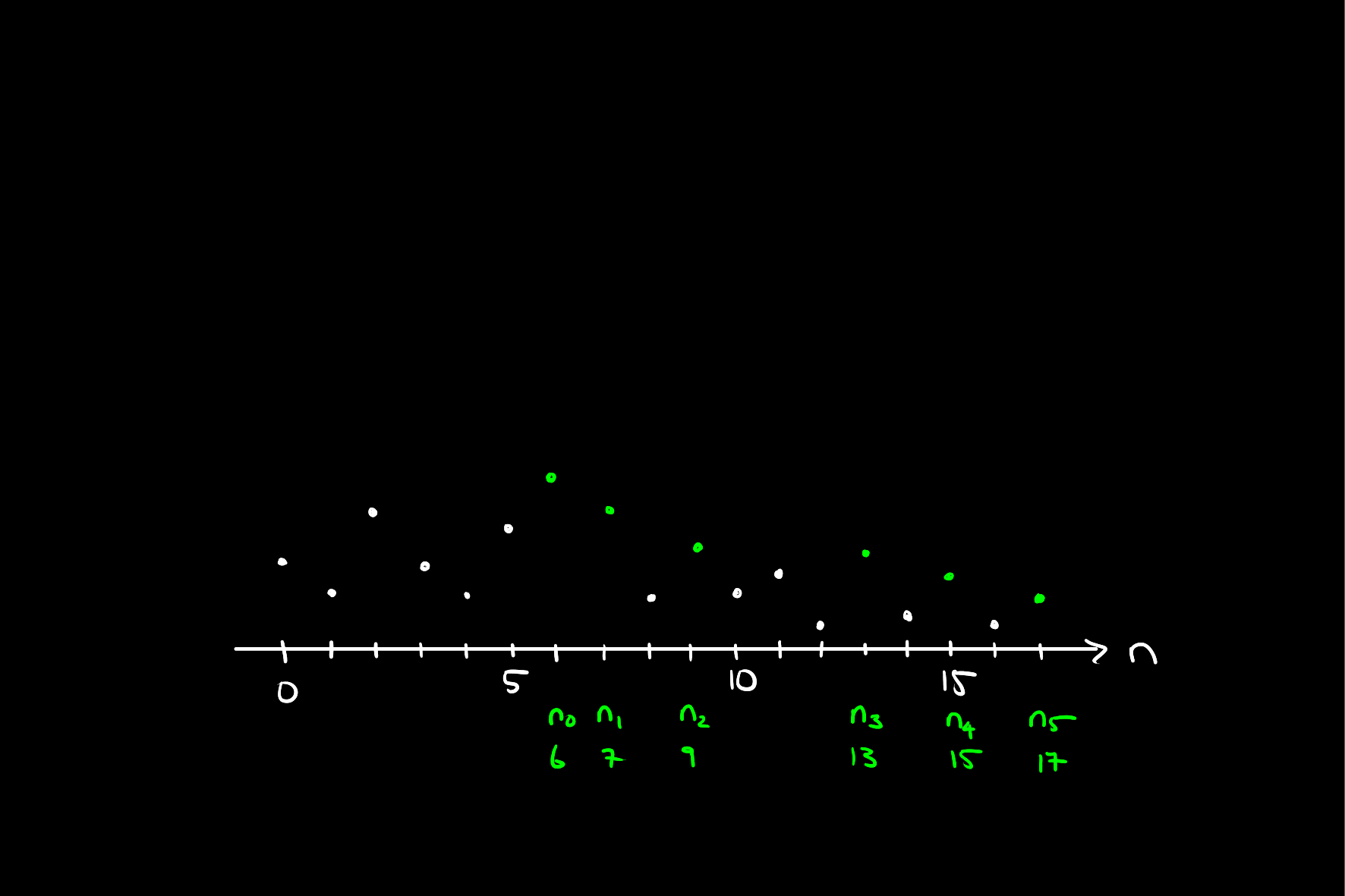Bolzano Weierstrass Theorem
Any bounded sequence of points in
Note that this theorem is for the topology induced by the Euclidean metric. In the context of general topological spaces, this is called the Bolzano-Weierstrass property.
Proof
We first prove the case with
We define a peak of the sequence to be a point
that is, they are greater than the rest of the sequence. Let
Consider the following diagram, where peaks are coloured in green and labelled as described above:

If there are infinitely many peaks, then
If not, then there are finitely many peaks, in which case we let
Now, let
By definition, there are no peaks in the rest of the sequence, and therefore for every point, there must be another greater than or equal to it. That is, there exists an

Then, if
To generalise to
If we consider the sequence of terms in the first dimension, we can find a convergent subsequence of these terms
This process can then be repeated, finding a subsequence of